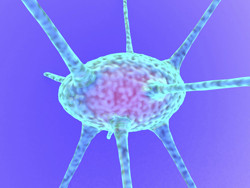Artificial neurons to model neurological diseases
Although certain therapies have proved successful for neurological disorders, treatment is lacking for numerous other impairments. This is highly dependent on the understanding of underlying neurological mechanisms responsible for the disability. However, the complex circuitry of the nervous system has proven difficult to interface, and thus novel technological solutions are required. In answer to this, scientists on the EU-funded 'Organic electronic artificial neurons' (OEAN) project proposed to generate a device that could operate in a chemical-electrical manner similar to the neuron. Connection of this device to electronic hardware would allow scientists to observe neural signalling electronically, rendering the artificial neuron a key to studying neural signalling pathways. To construct a functional artificial neuron, scientists combined biosensing technology with electronically controlled substance delivery. Instead of commercially available sensors, OEAN partners used polymers capable of conducting electricity to manufacture a transistor-based sensor for detecting the excitatory neurotransmitter glutamate. Since glutamate is not electrochemically active, scientists used an enzyme to degrade it into hydrogen peroxide, a compound that is routinely detected using a platinum sensor. The innovation of the OEAN project was that it used platinum nanoparticles to generate hydrogen peroxide sensors and electrochemical transistors to amplify the signal. The generated device displayed high sensitivity for glutamate at the micromolar range. Scientists also succeeded in manufacturing these devices by inkjet printing, which is expected to expedite production and lower cost. The OEAN device combines the electrical properties of a conducting polymer with the catalytic properties of platinum nanoparticles at the same location. In addition, the delivery element can be loaded with various chemicals extending its applicability to the monitoring of other molecules such as blood glucose levels. These features make this technology a promising candidate for next-generation biometric applications.







